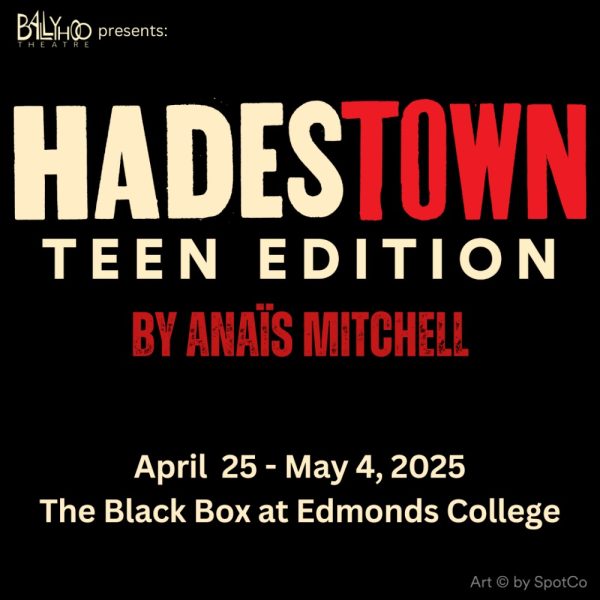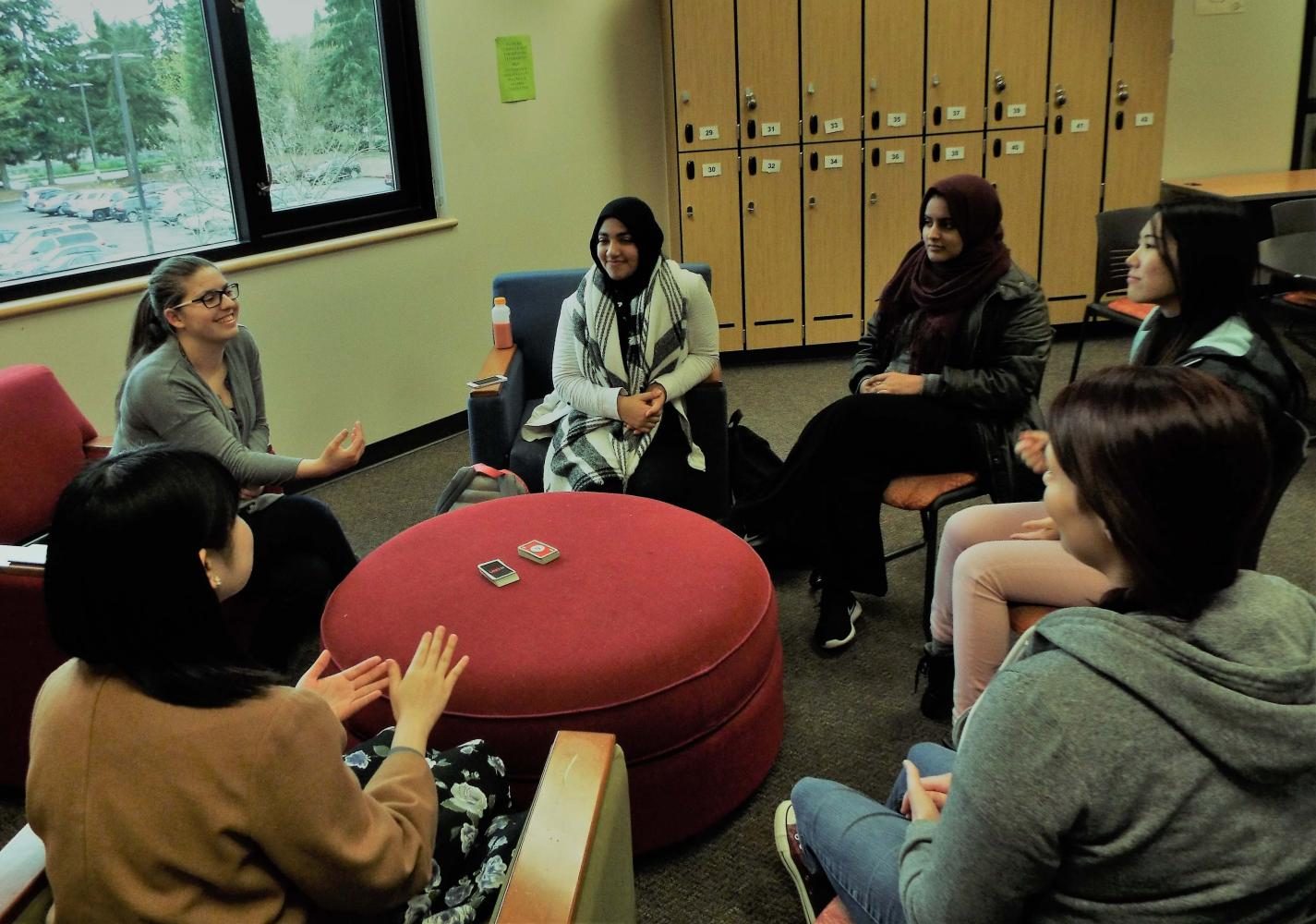Deaf visibility at EdCC
Deaf students face hardships during their education and gain success through advocacy
Members of the ASL Club met at the club room in Brier 247 to discuss current business and play Uno.
For many students, taking notes while listening to a teacher is the primary mode of learning. If we miss a word, we can turn to our neighbor and ask what it was. Someone’s cell phone rings and we look over, distracted.
For students who are deaf or hard of hearing, learning is a drastically different experience.
A federal requirement called the Least Restrictive Environment (LRE), passed in 1975, specified that students with disabilities be educated alongside other students whenever possible.
While this might work well for some disabilities, for many deaf students this classroom style leads to isolation and additional hardships in learning. The deaf culture is forced to conform to the hearing way of doing things, instead of both cultures informing and including each other.
Professor Richard Jacobs teaches American Sign Language (ASL) at EdCC, and advocated a self-contained classroom where deaf students and teachers can interact without communication barriers.
Learning happens quicker that way, because in a mainstream classroom, “No one wants to talk to the deaf student,” Jacobs bemoaned through interpreter Mark Vicks.
Not every deaf student can attend Gaulladet University, a private university for the deaf and hard of hearing, to experience barrier-free education. Not all deaf students want to.
Like anybody, deaf students choose which college to attend based on a variety of factors, such as location, tuition and where their friends are going.
Many students overcome the obstacles the hearing world presents. Jason Viglianco, who earned his AA from EdCC in 2005, shared that the class material was his main impediment.
He advised hearing students to use their body language to communicate with deaf students. “If I’m trying to read lips, make that clearer,” he shared through an interpreter. “Don’t be afraid to write and pass notes.”
Houng Baril, who earned a one-year certificate in 2007, chose EdCC because she prefers smaller communities, and the school is good about supplying interpreters.
Now Houng teaches an ASL class, in part to help hard of hearing students who otherwise might decide to get a cochlear implant. She hopes learning to sign will “reduce their fear of not being able to communicate.”
Doctors have recommended cochlear implants to parents who hope their deaf child will fit into the hearing world, but this can rob children of their deaf culture and reduce the window of time they have to develop language skills through signing.
Cochlear implants are expensive, dangerous and irregularly successful even after years of training and adjustments. Then of course, how do we define success? Using that term betrays an audist prejudice.
The Merriam-Webster Dictionary defines audism as “discrimination or prejudice against individuals who are deaf or hard of hearing.”
People can be audist, like they can be racist or sexist, without realizing it.
Jacobs shared that taking ASL can spur a huge change in students’ perspectives. It gives students conceptual skills they can apply to other oppressed cultures. Students in the class might discover, “I’ve taken advantage and didn’t even realize it.”
According to statistics gathered by the Gallaudet Research Institute, people who have hearing problems make up anywhere from 1.8 percent of the U.S. population (for individuals under six years old) to 29.1 percent of the population (individuals 65 and older).
This significant minority of deaf and hard of hearing people live in a world of oppression where their success and happiness is often measured by an audist’s yardstick.
So what can hearing students do to be allies to the deaf community? When Baril was asked the question, she laughed a little.
“Allies is a strong word. Honestly, it would be nice to have support,” she shared through an interpreter.
Jacobs and Baril agreed that taking an ASL class and learning ASL is the best way for hearing students to be allies to the deaf community. Jacobs’ goal with his classes is to encourage students to become advocates for deaf culture. He also suggested befriending deaf colleagues in the workplace.
Baril signed that deaf people can be left behind in the news. Sharing information is appreciated. Learning ASL isn’t enough—students need to socialize.
Baril recommended calling a deaf friend via video chat. She urged students who know signs, even just basic ones, to use them instead of gradually forgetting them.
“The more you use ASL, the more you’ll pick up in time,” Baril shared.
Baril mentioned several deaf gatherings where people are welcome to come and improve their signing skills.
The Urban City Coffee House in Mountlake Terrace hosts a group from 7-10 p.m. on the second Saturday of each month. On the second Friday of the month, others meet at the Starbucks on 128th Ave SW in Everett from 7-9 p.m.
Students who wish to stay on campus can join the ASL Club, contact Madeline Olson-Harris at [email protected] for more information.




